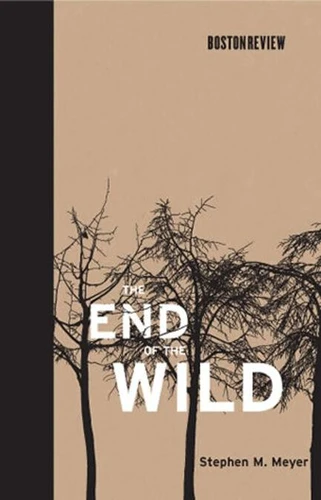The End of the Wild
Par :Formats :
Disponible dans votre compte client Decitre ou Furet du Nord dès validation de votre commande. Le format ePub protégé est :
- Compatible avec une lecture sur My Vivlio (smartphone, tablette, ordinateur)
- Compatible avec une lecture sur liseuses Vivlio
- Pour les liseuses autres que Vivlio, vous devez utiliser le logiciel Adobe Digital Edition. Non compatible avec la lecture sur les liseuses Kindle, Remarkable et Sony
- Non compatible avec un achat hors France métropolitaine
 , qui est-ce ?
, qui est-ce ?Notre partenaire de plateforme de lecture numérique où vous retrouverez l'ensemble de vos ebooks gratuitement
Pour en savoir plus sur nos ebooks, consultez notre aide en ligne ici
- Nombre de pages108
- FormatePub
- ISBN0-262-26098-0
- EAN9780262260985
- Date de parution15/09/2006
- Protection num.Adobe DRM
- Taille45 Ko
- Infos supplémentairesepub
- ÉditeurThe MIT Press
Résumé
A wake-up call that argues that although it may be too late to save biodiversity, we can take steps to save our ecosystems. With the extinction rate at 3000 species a year and accelerating, we can now predict that as many as half of the Earth's species will disappear within the next 100 years. The species that survive will be the ones that are most compatible with us: the weedy species-from mosquitoes to coyotes-that thrive in continually disturbed human-dominated environments.
The End of the Wild is a wake-up call. Marshaling evidence from the last ten years of research on the environment, Stephen Meyer argues that nothing-not national or international laws, global bioreserves, local sustainability schemes, or "wildlands"-will change the course that has been set. Like it or not, we can no longer talk about conserving nature, only managing what is left. The race to save biodiversity is over.
But that doesn't mean our work is over. The End of the Wild is also a call to action. Without intervention, the surviving ecosystems we depend on for a range of services-including water purification and flood and storm damage contro-could fail and the global spread of invasive species (pests, parasites, and disease-causing weedy species) could explode. If humanity is to survive, Meyer argues, we have no choice but to try to manage the fine details.
We must move away from the current haphazard strategy of protecting species in isolation and create trans-regional "meta-reserves, " designed to protect ecosystem functions rather than species-specific habitats.
The End of the Wild is a wake-up call. Marshaling evidence from the last ten years of research on the environment, Stephen Meyer argues that nothing-not national or international laws, global bioreserves, local sustainability schemes, or "wildlands"-will change the course that has been set. Like it or not, we can no longer talk about conserving nature, only managing what is left. The race to save biodiversity is over.
But that doesn't mean our work is over. The End of the Wild is also a call to action. Without intervention, the surviving ecosystems we depend on for a range of services-including water purification and flood and storm damage contro-could fail and the global spread of invasive species (pests, parasites, and disease-causing weedy species) could explode. If humanity is to survive, Meyer argues, we have no choice but to try to manage the fine details.
We must move away from the current haphazard strategy of protecting species in isolation and create trans-regional "meta-reserves, " designed to protect ecosystem functions rather than species-specific habitats.
A wake-up call that argues that although it may be too late to save biodiversity, we can take steps to save our ecosystems. With the extinction rate at 3000 species a year and accelerating, we can now predict that as many as half of the Earth's species will disappear within the next 100 years. The species that survive will be the ones that are most compatible with us: the weedy species-from mosquitoes to coyotes-that thrive in continually disturbed human-dominated environments.
The End of the Wild is a wake-up call. Marshaling evidence from the last ten years of research on the environment, Stephen Meyer argues that nothing-not national or international laws, global bioreserves, local sustainability schemes, or "wildlands"-will change the course that has been set. Like it or not, we can no longer talk about conserving nature, only managing what is left. The race to save biodiversity is over.
But that doesn't mean our work is over. The End of the Wild is also a call to action. Without intervention, the surviving ecosystems we depend on for a range of services-including water purification and flood and storm damage contro-could fail and the global spread of invasive species (pests, parasites, and disease-causing weedy species) could explode. If humanity is to survive, Meyer argues, we have no choice but to try to manage the fine details.
We must move away from the current haphazard strategy of protecting species in isolation and create trans-regional "meta-reserves, " designed to protect ecosystem functions rather than species-specific habitats.
The End of the Wild is a wake-up call. Marshaling evidence from the last ten years of research on the environment, Stephen Meyer argues that nothing-not national or international laws, global bioreserves, local sustainability schemes, or "wildlands"-will change the course that has been set. Like it or not, we can no longer talk about conserving nature, only managing what is left. The race to save biodiversity is over.
But that doesn't mean our work is over. The End of the Wild is also a call to action. Without intervention, the surviving ecosystems we depend on for a range of services-including water purification and flood and storm damage contro-could fail and the global spread of invasive species (pests, parasites, and disease-causing weedy species) could explode. If humanity is to survive, Meyer argues, we have no choice but to try to manage the fine details.
We must move away from the current haphazard strategy of protecting species in isolation and create trans-regional "meta-reserves, " designed to protect ecosystem functions rather than species-specific habitats.



